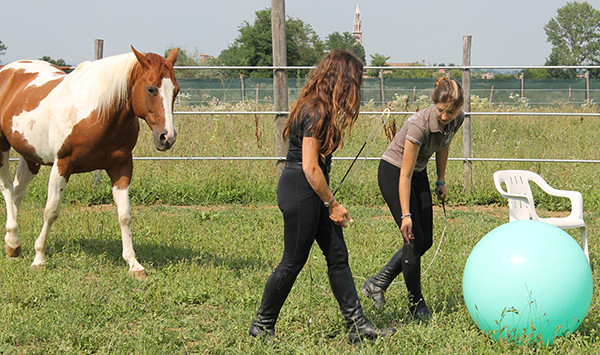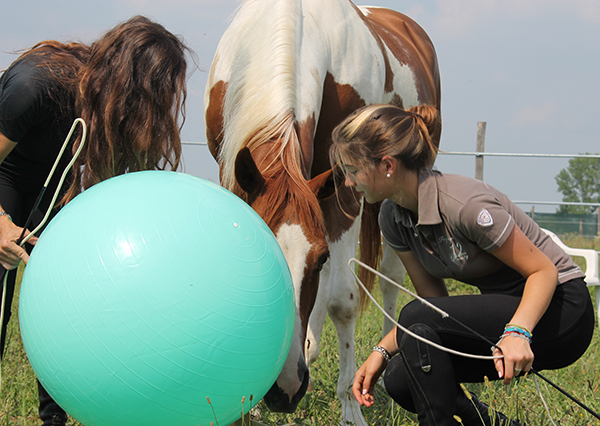
If we can look at behavior as the expression of an individual, we can also see that it is a dynamic entity that constantly changes. It has some components that are species specific like instincts, others coming from life experienced through memory, and some that are unconscious, like emotions. All of these are filtered through an individual’s personality.
Behavior can be influenced through the learning process, defined as the acquisition of information. In horsemanship a very important part of the information comes from the interaction between human and horse and we, horsemen, need to take responsibility for this. Aside from what can be openly perceived, learning produces a much hidden fact: the stimulation of neural cells, which causes the production of new molecules (proteins). These changes at cellular level determine the new way the cell and the whole individual will respond to a stimulus at a later time. This is true for humans and for horses or any other kind of animal.
In light of this, it is very important that in horsemanship we make so communication and understanding of each other really works both ways, from human to horse and from horse to human.
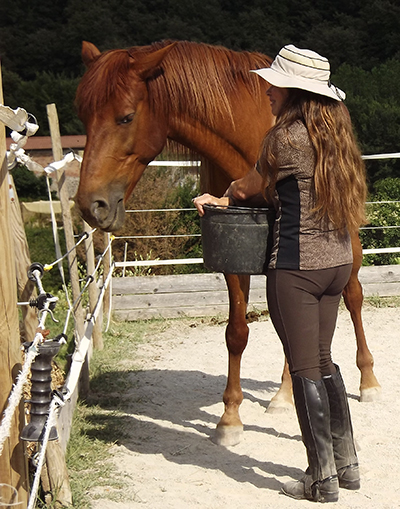
As horsemen we need to realize how deeply we actually reach inside the horse, with any and every action, and how much we keep solidifing wanted or unwanted behavior, if we just stay with reinforcement and punishment and do not think about how behavior really works. Sometimes we punish the horses for not complying with something that the animals can’t even understand. We even punish them for being afraid, thinking that somehow it will make them “better”.
A new chapter needs to be added to horsemanship, on how the horse views our actions, which means, for us, to keep in mind his needs, considering the horse as an individual of a different species, with thoughts and emotions.
Having a horse cooperate with us is a very sought for situation, and it is not so difficult to achieve. Thanks to its natural herd mentality a horse will cooperate if we look like a good leader and we shape our actions around terms that are interesting because he could immediately make sense of them. The way we can monitor how we are doing is if we look for the horse’s feedback and honestly evaluate what we are doing, just like we would do in a human-to-human relationship.
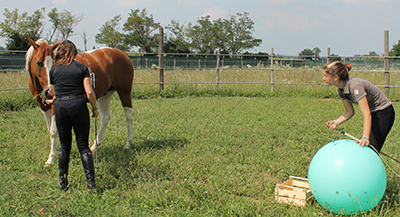
In horsemanship as well as in any other relationship, our information reaches us through our senses, and so is for the horse. In Human Horse Sensing the interaction revolves around matters like mutual presence, trust, respect, cooperation and attention, that do not need to be trained into the horse; he has its own concept of them and we need to learn what it is. Horses have those values, just in a much simpler form than we do, and they express them in “conversations” that are mainly through reciprocal movement, space and access to food.
In my experience, one easy way to effectively communicate with horses is using treats, but in the equestrian world, the relationship between the use of treats and training is one of the most discussed, and argued over topics. Many experts are opposed to using treats as a reward. The most immediate reason is that the horse could become spoiled and rude, more interested in the food than in the relationship with his human partner. I think that using treats as a reward during training is of great advantage because food is a familiar subject for the horse and catches its interest instantaneously. Many of the interactions that are important for establishing the order in a herd, are about grazing rights. One of the first lessons the foal learns from his mother is about when he should eat and when he shouldn’t eat. This lesson, in the wild, is of vital importance for survival.
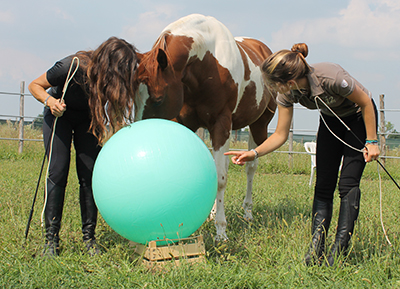
Using food as a reward for training can create problems because it is used without knowing what its meaning is for the horse and, most of all, before the horse has had the chance to acquire “good manners” and “respect” towards man around food. The choice of using food as a training tool has to be done based on the individual horse. Some horses, alike people, physically loose their ability to control themselves around food for a biological reason, but choosing always not to use food in training eliminates one of the best tools, and communication devices a trainer has access to.
Before using food as a reward in training, the horses need to learn that there are rules to be followed just like the rules found in a natural herd, only in our case they are between humans and horses. In HH Sensing, the rules are laid out without using fear, by acting in terms of territory and proximity, with the horse free to move. If the use of food becomes a problem it is best to abandon it, and revisit the matter in a separate time.
Horses express themselves by body language, which includes biting or kicking each other if they disagree. This cannot happen between human and horse, so it is up to us to be always aware of a horse’s body language and of our space. In Human Horse Sensing Horsemanship the interaction happens by modulating our distance with the horse and our body language so that we do not get to the kick or the bite, but we can still freely interact with horses.
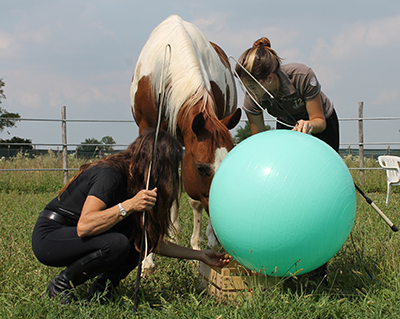
Due to its nature the horse can perceive being given treats in two ways; either as a gift, or as he took the treat against our will, just because he took it out of your hand. In this case, given the equine “pecking order” nature, people loose the horse’s respect and thus the right to lead him. A very important part of HH Sensing is about learning how to best communicate with horses at liberty, a state in which we can see the real behavior of our horses. If you can control a horse’s behavior and have his respect in terms of space around food he will really respect you without fear. The horse will take the treat as a gift, will be grateful and polite when he is in your charge.
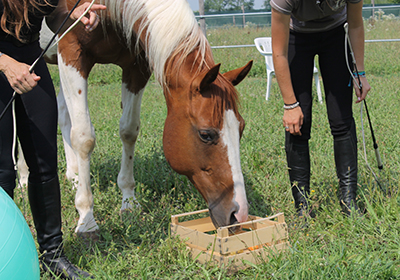
When properly used, food has some very profound way to act on the horse’s organism, it stimulates the production of endorphins, giving almost immediate sense of wellbeing. Food can meaningfully reach the deepest part of our horses: their emotions.
When we always take care of their wellbeing, horses have reasons to become more interested in the connection with us, and in our performance together, rather than the treat itself.
